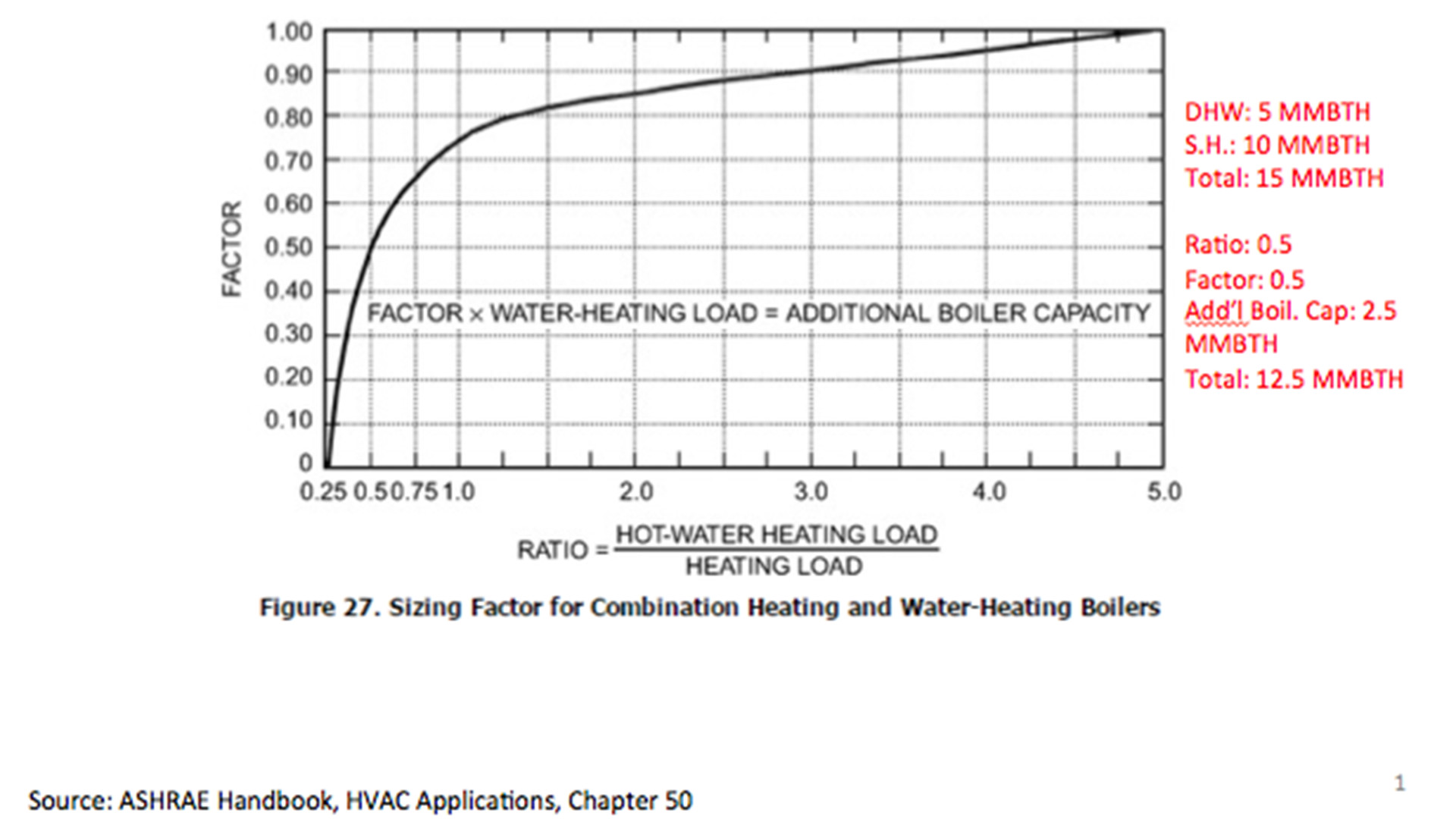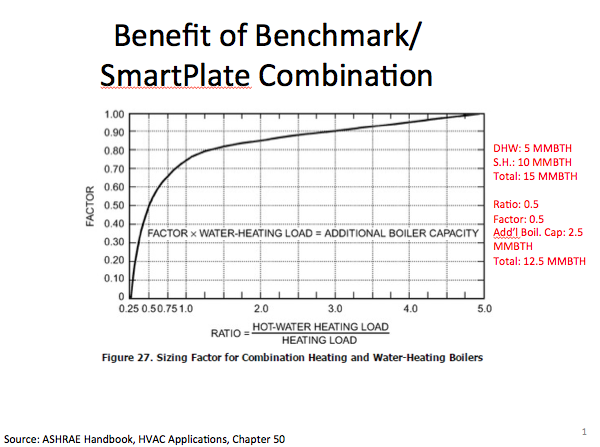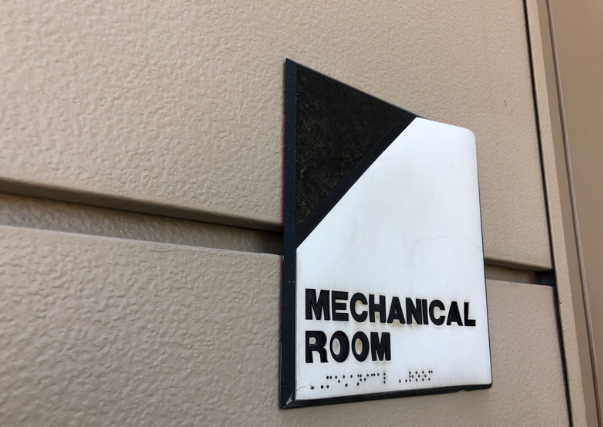For most commercial and institutional buildings, conventional thought has always been to design a boiler system to handle heating loads and a separate water heating system to satisfy domestic hot water demands. This is a relatively simple, straightforward approach. However, did you know there are some big benefits to consider when putting the domestic hot water heating load onto the space heating boilers?
Consider these three benefits to using condensing gas-fired space heating boilers with a plate and frame heat exchanger (P&F HX) for domestic water heating:
- Total required heating capacity Is reduced. By combining the space heating and domestic water heating loads onto the same equipment, the overall capacity may be reduced. See the graph below from the ASHRAE HVAC Applications Handbook and the example numbers in red.

This is possible because of the following (ref: ASHRAE HVAC Applications Handbook Chapter 50):
a. Maximum space-heating requirements do not occur at the time of day when the maximum peak hot-water demands occur.
b. Space-heating requirements are based on the lowest outdoor design temperature, which may occur for only a few days of the total heating season.
c. An additional heat supply or boiler capacity to compensate for pickup and radiation losses is usual. The pickup load cannot occur at the same time as the peak hot-water demand because the building must be brought to a comfortable temperature before the occupants use hot water. - Boiler plant efficiency may be increased. For condensing boilers, the lower the return water temperature, the higher the efficiency. The <60°F domestic cold water entering the P&F HX will help lower the temperature of the building return water even more before it enters the boilers, resulting in greater combustion efficiency.
- No storage. If you are serving a laundry system, a large kitchen, or other application with large hot water dump loads, this does not apply. For most other standard commercial or institutional buildings, removing hot water storage tanks and replacing them with a P&F HX is beneficial because:
a. Storage tanks eventually leak. Some lining material lasts longer than others, but, at some point, the water chemistry will win the day and that storage tank will need to be replaced. This may be costly and impractical due to the installation location.
b. Storage-type water heaters fail quicker than storage tanks. When you have the fire inside the storage vessel, you are exposing dissimilar materials to variations in temperature. With different rates of expansion, the materials and their bonds eventually fail.
c. Prevents stagnation and Legionella growth. Water maintained at certain temperatures within a storage tank or storage heater can create an environment favorable for the growth of the bacteria Legionella. By eliminating storage, this risk is greatly reduced.
There are products and technologies that make this heating approach much simpler and more advantageous than in years passed. As always, this method may not be appropriate for every application. If you would like to know if this combined space heating and domestic water heating strategy is right for your next project, contact your local manufacturer's representative.









Submit a Comment